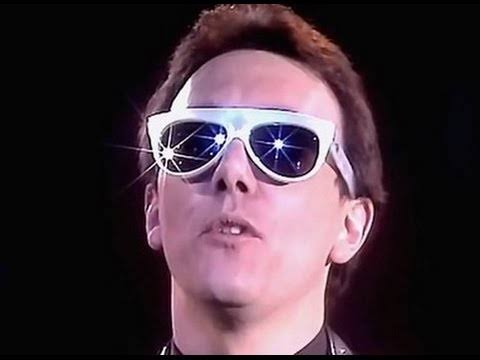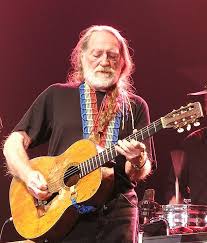The Golden Age of 80s Music Videos: A Revolution in Sound and Vision
The 1980s were a transformative decade for the music industry, defined by the birth and explosive growth of the music video. What began as a novel way to promote songs turned into an art form that reshaped pop culture, revolutionized marketing, and left an indelible mark on entertainment. The advent of MTV (Music Television) in 1981 ushered in a new era where visuals became as important as the music itself, elevating artists to iconic status and captivating audiences worldwide.
In this article, we take a deep dive into the era of 80s music videos, exploring their evolution, iconic contributions, and lasting cultural impact.
On August 1, 1981, MTV debuted with the prophetic song “Video Killed the Radio Star” by The Buggles. The channel revolutionized how people consumed music, introducing a 24/7 platform dedicated to music videos. Before MTV, music videos were mostly promotional tools shown in limited venues. The new format gave artists an unprecedented way to reach global audiences.
MTV wasn’t just a channel; it was a cultural phenomenon. Its catchy slogan, “I Want My MTV,” became a rallying cry for music lovers, and its format brought a new visual dimension to music that hadn’t existed before.
The 80s music video wasn’t just about showing a band performing a song; it was about creating a visual narrative that complemented the music. Artists and directors used videos to tell stories, showcase their personalities, and experiment with groundbreaking technology.
Some of the decade’s most memorable videos pushed the boundaries of creativity:
- Michael Jackson’s “Thriller” (1983): Directed by John Landis, this 13-minute masterpiece blended horror, dance, and storytelling, setting the standard for ambitious music videos. It was the first video to be treated as a cinematic event, and its influence can still be seen today.
- Duran Duran’s “Rio” (1982): With its exotic locations and stylish visuals, this video epitomized the glamour of the 80s and helped define the music video as a fashion-forward medium.
- A-ha’s “Take On Me” (1985): Known for its innovative rotoscope animation, this video blurred the lines between reality and fantasy, captivating viewers with its groundbreaking visual effects.
Music videos became platforms for artists to showcase their unique styles and identities, making them trendsetters in fashion and culture. Madonna’s “Like a Virgin” established her as a fashion icon, while Prince’s “Purple Rain” fused music and aesthetics into a single unforgettable experience.
The 80s music videos also amplified the concept of branding. Artists like David Bowie, Cyndi Lauper, and George Michael used their videos to create personas that resonated with their music, further enhancing their appeal.
The 80s were also a time when music video directors began to be recognized as creative geniuses in their own right. Directors like Russell Mulcahy, who worked with artists like Duran Duran, and Steve Barron, known for A-ha’s “Take On Me” and Michael Jackson’s “Billie Jean,” elevated music videos to cinematic art forms.
Spike Jonze, David Fincher, and Michael Bay would later follow in their footsteps, creating videos that weren’t just supplementary to the music but integral to the storyt
The popularity of music videos in the 80s reshaped global pop culture. MTV became a cultural force, influencing fashion, language, and even social issues. Programs like “MTV News” and “MTV Unplugged” expanded the channel’s influence beyond music videos, connecting with young audiences on a deeper level.
Music videos also played a crucial role in breaking barriers. Michael Jackson’s “Billie Jean” was the first video by a Black artist to be played in heavy rotation on MTV, paving the way for greater diversity on the channel.
The 80s were a time of rapid technological innovation, and music videos took full advantage. Special effects, green screens, and animation became key tools in creating visually stunning pieces. Peter Gabriel’s “Sledgehammer” (1986) used stop-motion animation to create a surreal and unforgettable visual experience that remains iconic.
These technological advancements not only changed music videos but also influenced other industries, including advertising and film.
The music videos of the 80s weren’t just visuals; they were soundtracks that defined a generation. Whether it was the rebellious energy of The Clash, the synth-pop soundscapes of Depeche Mode, or the heart-pounding rock anthems of Bon Jovi, the decade’s music videos captured the spirit of the times.
Songs like “Girls Just Want to Have Fun” by Cyndi Lauper and “Sweet Child o’ Mine” by Guns N’ Roses became cultural anthems thanks in large part to their memorable music videos.
Though the 80s are long gone, their influence lives on. Today’s artists and directors continue to draw inspiration from the creativity and innovation of the era. Modern music videos often pay homage to the 80s, whether through retro aesthetics, storytelling techniques, or visual effects.
Platforms like YouTube have taken the music video to new heights, but the blueprint laid down in the 80s remains the foundation. Artists like Lady Gaga, The Weeknd, and Billie Eilish owe much of their visual storytelling success to the trailblazers of that decade.
The 1980s were a golden age for music videos, a time when music and visuals came together to create an entirely new art form. From the birth of MTV to the groundbreaking creativity of artists and directors, the decade transformed how we experience music and reshaped pop culture forever.
For those who lived through it, the 80s remain a time of unmatched creativity and excitement. For younger generations, the music videos of the era are timeless works of art that continue to inspire and entertain.
In a world where visual storytelling is more important than ever, the legacy of 80s music videos stands as a testament to the power of innovation, passion, and the enduring magic of music.


